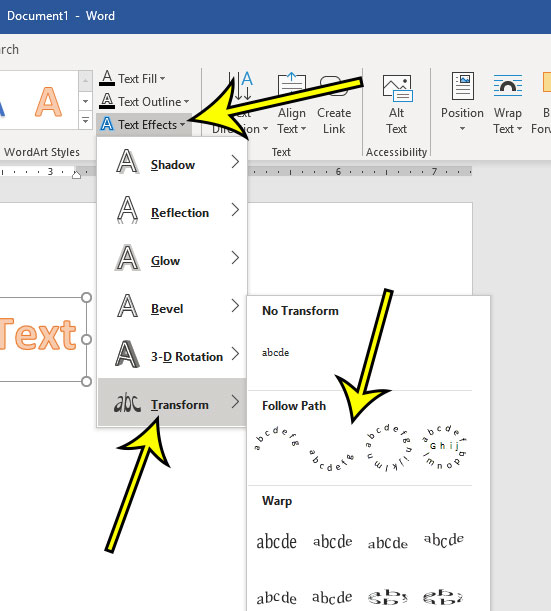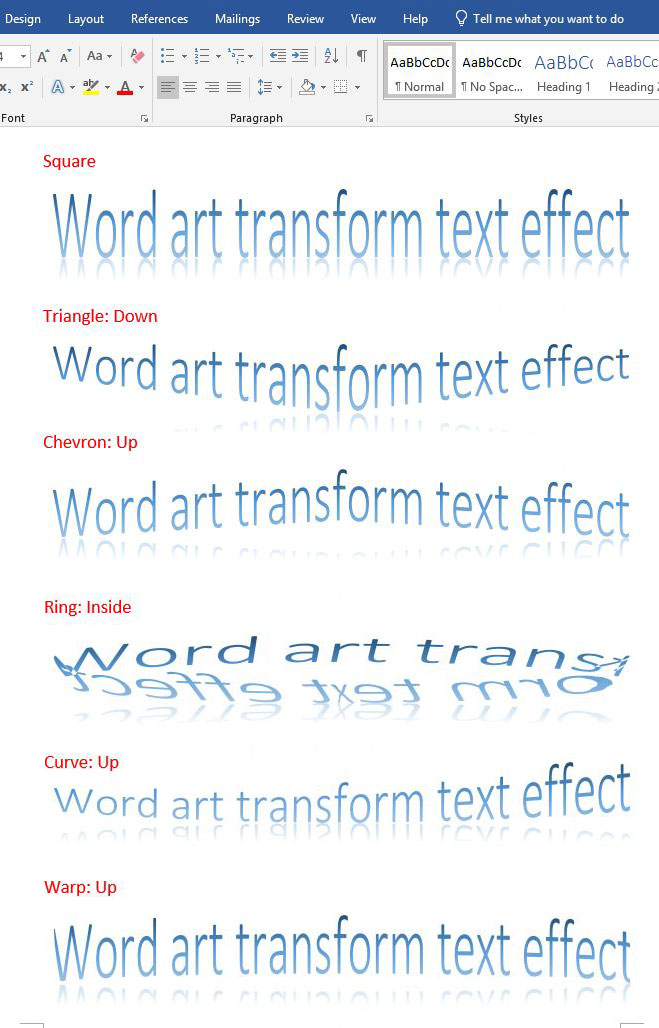

- Transform word art word 2013 how to#
- Transform word art word 2013 pro#
- Transform word art word 2013 code#
- Transform word art word 2013 windows#

One interesting thing to note is the w:proofErr block. For instance, w:tcPr contains cell properties, all the wsp attributes can be ignored or deleted, w:pPr are paragraph properties, etc. There is a lot in the markup for that table cell.
Transform word art word 2013 code#
After finding them and indenting the code around them we have: Mine is in line 12, column 21689 but your mileage may vary.īecause we know this is a table cell, we know that our placeholder is going to be locate within a set of w:tc tags. Using your editor's search function look for phTitle. We need to navigate through the source of the XSLT document to locate the placeholders we created for our fields.įor instance, the first one is going to be the phTitle placeholder in the first cell of the table. It does not do anything interesting, but it is a start. So now officially your template.xslt is a well-formed XSLT document. Open it in a text-editor and replace the Word preamble: Lets create a copy of the document and rename it to template.xslt. The first thing we need to do with our document to convert it into an XSLT is to replace the Word document preamble with an XSLT preamble. Converting the template into an XSL transformation Save the document (File > Save As) as Word 2003 XML Document. Now we are ready to convert this into an XSL transformation. A very basic report skeleton could look like this: You can also start from your existing reporting template but we are going to keep things simple in this guide.
Transform word art word 2013 pro#
Now that we have a basic understanding of the inner workings of the WordprocessingML and XSLT technologies we can start working on our Dradis Pro template. > xslt = Nokogiri::XSLT( File.read('simple.xslt') ) > source = Nokogiri::XML( File.read('dradis_source.xml') ) If you want to verify this by yourself, create the dradis_source.xml and simple.xslt files in a temporary folder and fire the Ruby interpreter (install the Nokogiri gem first if it is not installed): The above transformation will create a Word document with a new paragraph containing the Title field for every Note in the source XML: Thankfully, we will be able to ignore most of it. This is because Word starts including styling information, additional namespaces and a plethora of other bits and pieces. We have gone from 280 bytes to a 10KB of document! Try opening the file in Word, adding a second line to the document and saving it again. Unfortunately Word is not going to keep your XML as clear and simple as our example. To get familiar with the other elements you will need to review the Overview of WordprocessingML and sharpen your Google skills. Other common items you will have to work with are tables, table rows and table cells ( w:tbl, w:tr, and w:tc respectively). w:r represents a text run, a contiguous set of WordprocessingML components with a consistent set of properties.

In the example you can see some of the elements we will have to deal with when creating the template:
Transform word art word 2013 windows#
If you copy and paste the above text into a file and have Word installed, Windows will detect this XML (because of the mso-application declaration) and will launch Word if you double-click it. The bare minimum WordprocessingML document is: Unfortunately WordprocessingML is a huge topic. In this case we are going to convert an input XML containing the information stored in your Dradis repository into an output document in the WordprocessingML format.
Transform word art word 2013 how to#
We are going to make use of one of such tools: XSL transformations (XSLT).Īn XSLT document is itself an XML document that contains rules on how to transform an input XML into an output document (you can read more on the XSLT Wikipedia page). On the bright side, there are plenty of tools out there to work with XML documents. You check out the Overview of WordprocessingML in MSDN. The WordprocessingML language is quite complex and it takes some getting used to. Unfortunately, this is not such good news as one would think. Starting in Word 2003, Word documents are built using XML in what Microsoft calls the WordprocessingML.



 0 kommentar(er)
0 kommentar(er)
